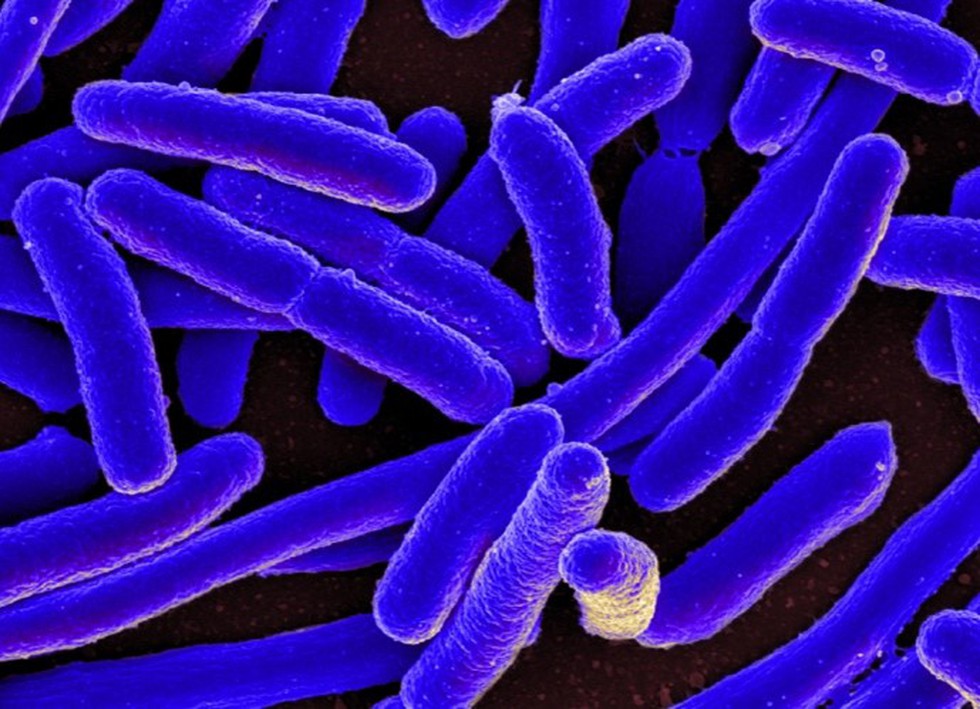
About E. coli:
- Escherichia coli, commonly known as E. coli, is a type of bacteria that can be found in the intestines of humans and animals.
- coli is a rod-shaped bacterium of the Enterobacteriaceae family.
- While most strains of E. coli are harmless and even beneficial, some strains can cause illness and infections.
- Some kinds of E. coli can cause diarrhoea, while others cause urinary tract infections, respiratory illness and pneumonia, and other illnesses.
- Transmission: Pathogenic E. coli can be transmitted to humans through contaminated food, water, or contact with faecal matter from infected individuals or animals.
- How does E. coli make you sick?
- The most familiar strains of E. coli that make you sick do so by producing a toxin called Shiga.
- This toxin damages the lining of your small intestine and causes diarrhoea.
- These strains of E. coli are also called Shiga toxin-producing E. coli (STEC).
- The STEC that is most well-known and most often referred to is E. coli O157:H7, or just E. coli O157.
- Symptoms:
- Symptoms of an E. coli infection can vary depending on the specific strain and severity of the infection.
- Common symptoms include diarrhoea (which may be bloody), abdominal pain and cramping, nausea, and sometimes fever.
- In severe cases, E. coli infections can lead to haemolytic uremic syndrome (HUS), a condition that can cause kidney failure and other complications, especially in young children and the elderly.
- Treatment:
- Most E. coli infections are self-limiting and resolve on their own without treatment. However, it's essential to stay hydrated during the course of the illness.
- In severe cases or when complications arise, medical attention may be required.

About Aeolus Wind Satellite:
- Aeolus is a satellite mission launched by the European Space Agency (ESA) to study Earth's winds and their influence on the planet's climate and weather patterns.
- The mission is named after Aeolus, the ruler of the winds in Greek mythology.
- Aeolus was launched on August 22, 2018, from the Guiana Space Centre in French Guiana.
- It is a 1,360-kilogram satellite.
- Mission Objectives:
- The primary goal of the Aeolus mission is to measure global wind profiles from space.
- It aims to provide accurate and comprehensive data on wind patterns in the Earth's atmosphere to improve weather forecasting, understand climate dynamics, and enhance our knowledge of the Earth's atmospheric circulation.
- It is the first satellite mission to acquire profiles of Earth’s wind on a global scale.
- Instrumentation:
- Aeolus is equipped with a single instrument called the Atmospheric Laser Doppler Instrument (ALADIN).
- ALADIN is a Doppler wind lidar, which stands for Light Detection and Ranging, that will measure the winds sweeping around the planet.
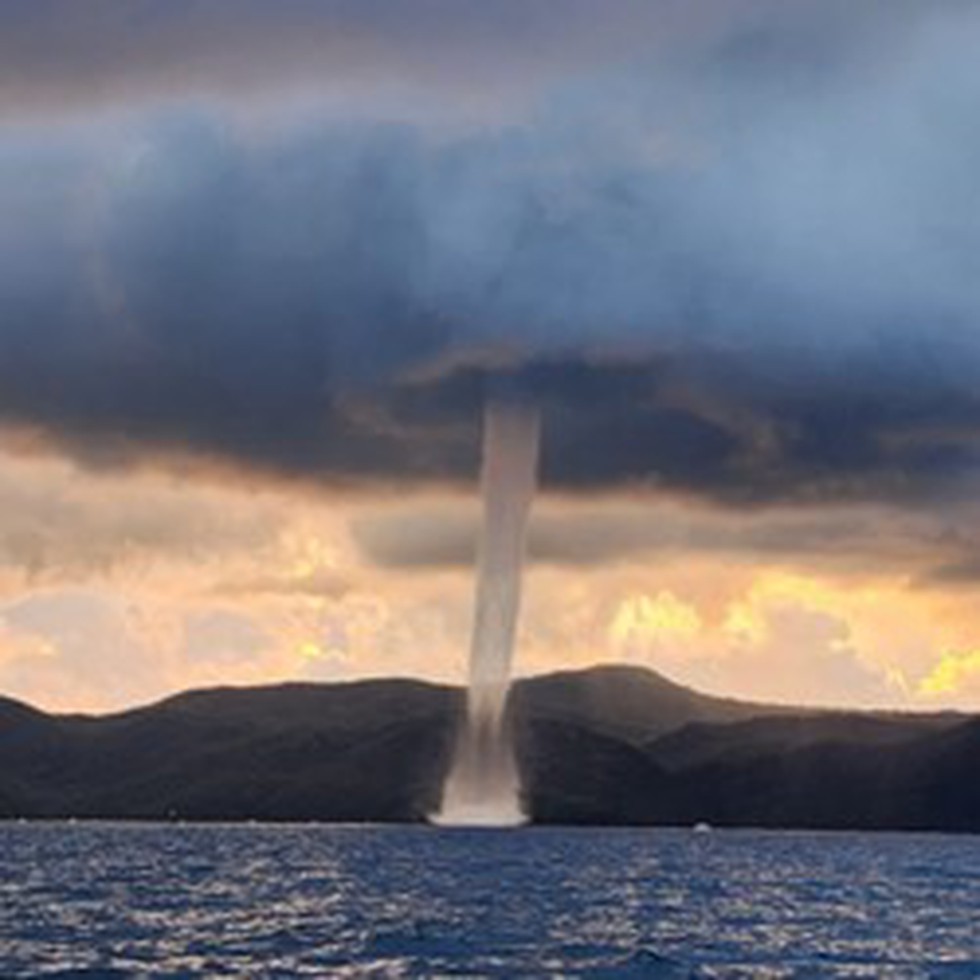
About Waterspouts:
- A waterspout is a tornado-like column or funnel of violently rotating air that usually forms over the surface of the sea.
- It is a non-supercell tornado over water having a five-part life cycle,
- formation of a dark spot on the water surface;
- spiral pattern on the water surface;
- formation of a spray ring;
- development of the visible condensation funnel;
- and ultimately, decay;
- Waterspouts form mostly in tropical and subtropical areas. But regions, including Europe, Middle-East, Australia, New Zealand and Antarctica also report these on rare occasions.
- They may assume many shapes and often occur in a series, called a waterspout family.
- Key characteristics of waterspouts include:
- Funnel cloud: Waterspouts have a visible funnel-shaped cloud that extends downward from a parent cloud or the base of the thunderstorm.
- Water connection: Waterspouts have a visible connection to the water's surface, drawing water or spray upward into the vortex.
- Duration: Waterspouts can be relatively short-lived, ranging from a few minutes to an hour or so.
- Size: Waterspouts are typically much smaller in scale compared to tornadoes, with diameters ranging from tens to a few hundred meters.
- They are classified into two main types: tornadic waterspouts and fair-weather waterspouts.
- Tornadic waterspouts:
- They are tornadoes that form over water, or move from land to water.
- They have the same characteristics as a land tornado.
- They are associated with severe thunderstorms, and are often accompanied by high winds and seas, large hail, and frequent dangerous lightning.
- Fair weather waterspouts:
- They usually form along the dark flat base of a line of developing cumulus clouds.
- This type of waterspout is generally not associated with thunderstorms.
- While tornadic waterspouts develop downward in a thunderstorm, a fair-weather waterspout develops on the surface of the water and works its way upward.
- By the time the funnel is visible, a fair-weather waterspout is near maturity.
- Fair weather waterspouts form in light wind conditions so they normally move very little.
What is a Tornado?
- A tornado is a narrow, violently rotating column of air that extends from a thunderstorm to the ground.
- Because wind is invisible, it is hard to see a tornado unless it forms a condensation funnel made up of water droplets, dust and debris.
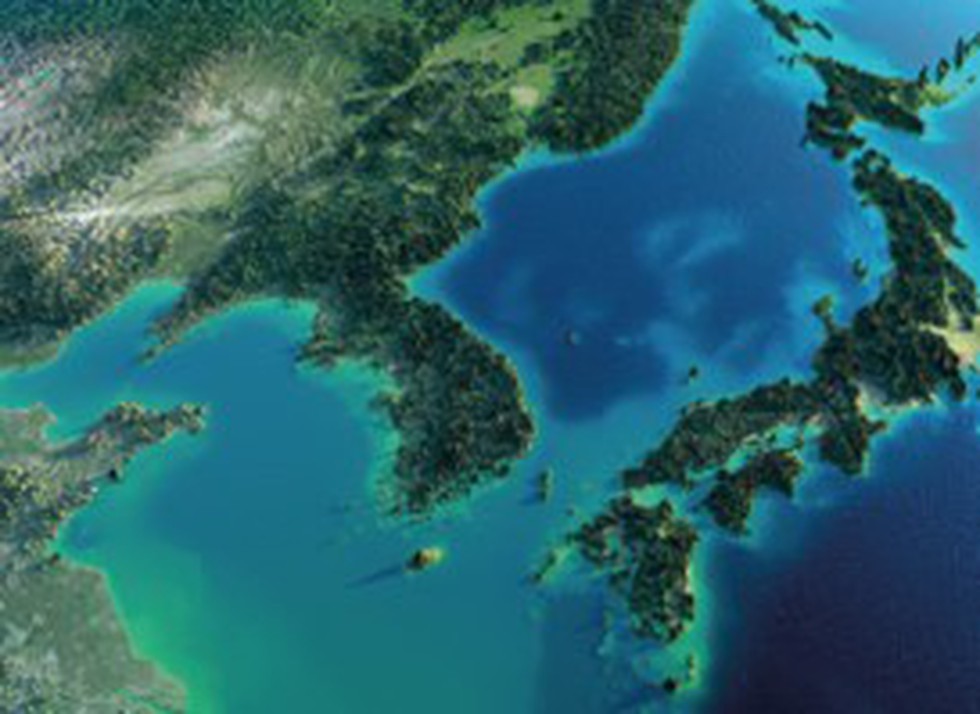
About Yellow Sea:
- It is a marginal sea of the western Pacific Ocean.
- Location:
- The Yellow Sea is situated between mainland China to the west and north, the Korean Peninsula to the east, and the Shandong Peninsula and Liaodong Peninsula to the south.
- It connects with the Bohai Sea to the northwest.
- Size: Also referred to in China as Huang Hai and in North and South Korea as the West Sea, the Yellow Sea is 870 kilometres long and 556 kilometres wide.
- Depth: It is one of the largest shallow areas of continental shelf in the world with an average depth of 44 metres and a maximum depth of 152 metres.
- Inflow: Several major rivers, including the Yellow River and the Yangtze River, discharge into the Yellow Sea, carrying significant amounts of sediment and nutrients.
- Islands: The Yellow Sea is dotted with numerous islands, the largest of which include Jeju Island (South Korea), Shandong Peninsula islands (China), and Ganghwa Island (South Korea).
- Climate: The climate is characterized by very cold, dry winters and wet, warm summers.
- Currents:
- The warm current of the Yellow Sea is a part of the Tsushima Current, which diverges near the western part of the Japanese island of Kyushu and flows at less than 0.5 mile (0.8 km) per hour northward into the middle of the sea.
- Along the continental coasts, southward-flowing currents prevail, which strengthen markedly in the winter monsoon period, when the water is cold, turbid, and of low salinity.
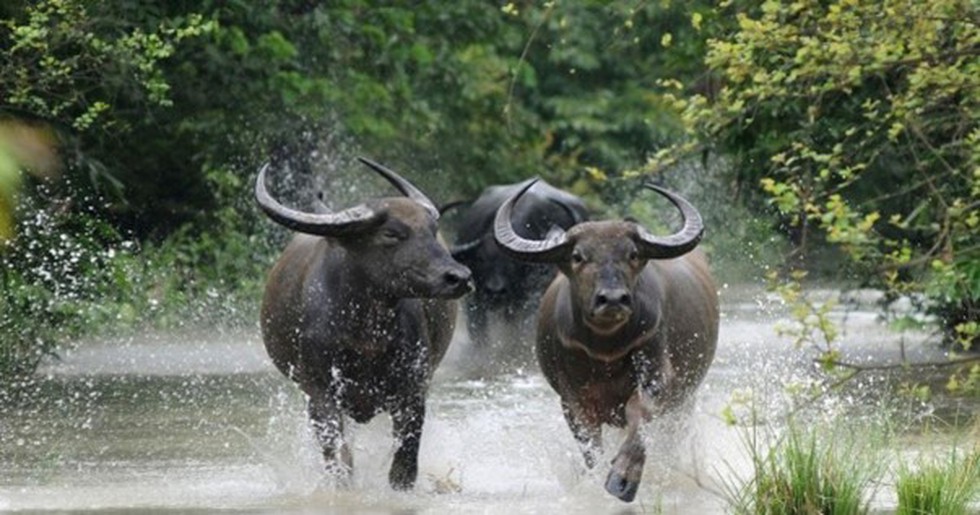
About Indravati Tiger Reserve:
- Location: It is located in the Bijapur district of Chhattisgarh.
- The park derives its name from the Indravati River, which flows from east to west and forms the northern boundary of the reserve with the Indian state of Maharashtra.
- Indravati attained the status of a national park in 1981 and a tiger reserve in 1983 under Project Tiger.
- Topography: It mainly comprises of undulating hilly terrain with altitudes ranging between 177 to 599 m above sea level.
- Vegetation: Three major forest types are recognized in Indravati: Moist Mixed Deciduous Forest with Teak, Moist Mixed Deciduous Forest without Teak, and Southern Dry Mixed Deciduous Forest.
- Flora: Some common species include teak, achar, karra, kullu, shisham, semal, haldu, arjun, bel and Jamun.
- Fauna:
- It is home to one of the last populations of rare wild buffalo.
- Major faunal species include tiger, leopard, striped hyena, wolf, common mongoose, freshwater crocodile, common monitor lizard, Indian bull frog, herons, white-necked stork, black-necked stork, white ibis, black ibis etc.
Key facts about Indravati River:
- It is a tributary of the Godavari River and flows through the central Indian states of Maharashtra, Chhattisgarh, and Odisha.
- Origin: It rises in the Kalahandi district of Odisha on the western slopes of the Eastern Ghats.
- Length: It flows for 535 km and has a drainage area of 41, 665 sq. km.
- Course: After originating in Odisha, it flows westwards to join the Godavari, thus forming the boundary between Maharashtra and Chhattisgarh states at some places.
- The famous `Chitrakoot` falls forms on Indravati River in Chhattisgarh.
- The Indravati River is sometimes known as the "lifeline" of the Bastar District, which is known as one of the greenest districts in India.
- Tributaries:
- The major right-bank tributaries of the Indravati River are Bhaskel River, Narangi River, Nimbra River, Kotri River and Bandia River.
- The Nandiraj River is the only important left-bank tributary of the Indravati River.
- Indravati Dam:
- Indravati Dam, or the Upper Indravati Hydro Power Project, was built near the town of Mukhiguda in the Kalahandi district.
- It is one of the largest dams in India as well as Asia and produces 600 MW of electricity.
- The project envisages the diversion of water of the Indravati River in its upper reaches into the Mahanadi valley for power generation and irrigation.
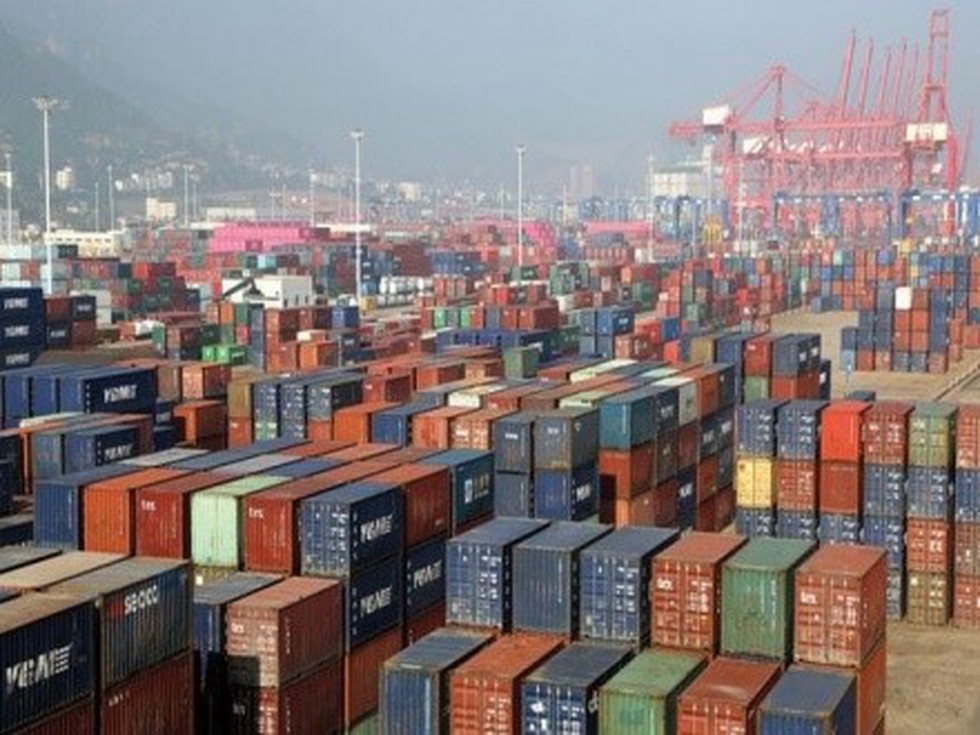
About Logistics Data Bank Project:
- This project was launched on 2016 at the Jawaharlal Nehru Port, Mumbai.
- Objectives: The project launched to make India’s logistics sector more efficient through the use of Information Technology.
- Implementing Agency: It is being implemented through a Special Purpose Vehicle called Delhi Mumbai Industrial Corridor Development Corporation Logistics Data Services Ltd. (DLDSL) - that is jointly (50:50) owned by the Delhi Mumbai Industrial Corridor (DMIC) Trust and Japanese IT services major NEC Corporation.
- Key features:
- Every container is attached to a Radio Frequency Identification Tag (RFID) tag and then tracked through RFID readers - aids importers and exporters in tracking their goods in transit.
- This has, in turn, cut the overall lead time of container movement as well as reduced transaction costs that consignees and shippers incur.
- The project covers “the entire movement (of containers) through rail or road till the Inland Container Depot and Container Freight Station.
- The service integrates information available with the agencies across the supply chain to provide detailed, real-time information within a single window.
- It is billed as a major ‘ease of doing business’ initiative aimed at boosting India’s foreign trade and ensuring greater transparency.
- Nodal Ministry: Ministry of Commerce and Industry.
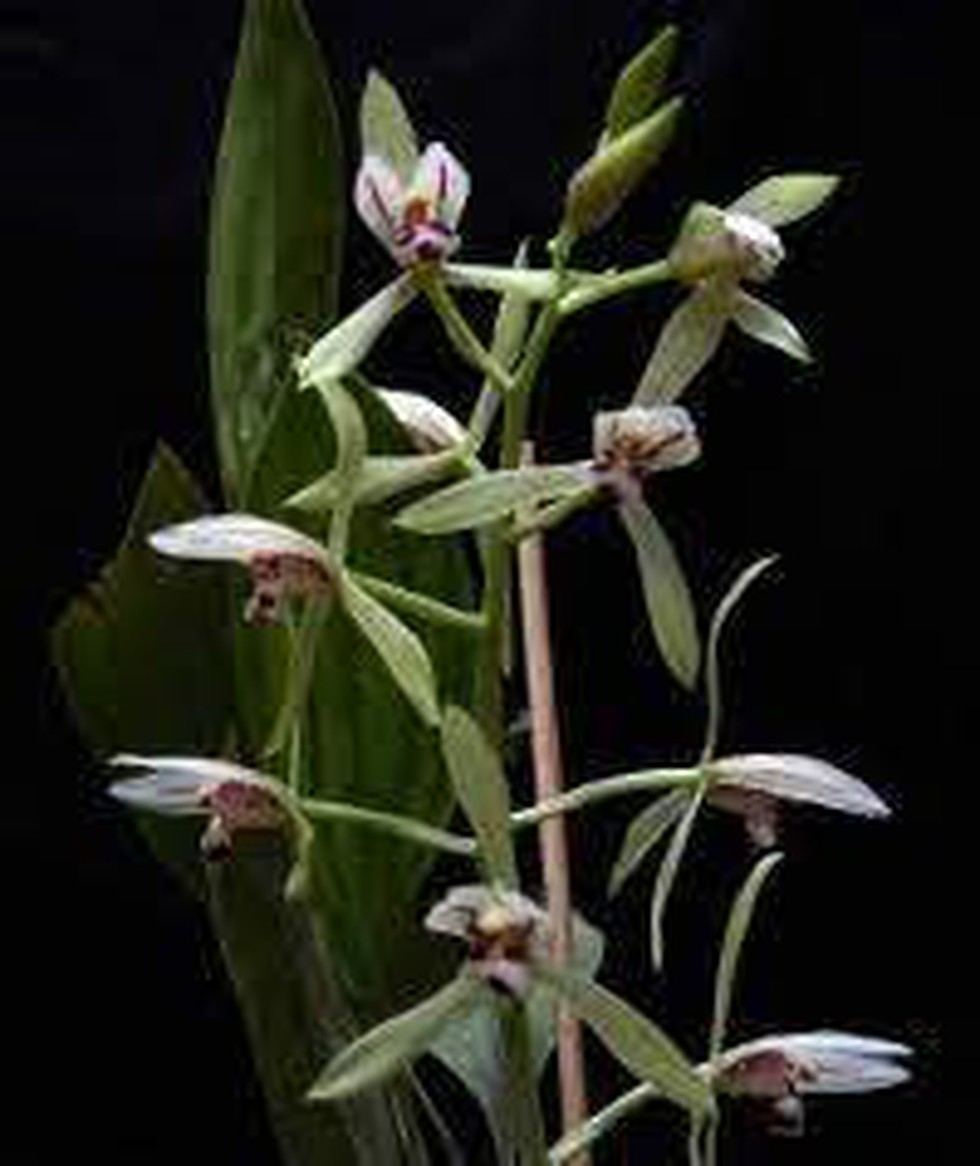
About Cymbidium Lancifolium:
- This is one of the beautiful species of Cymbidium, also known as Lance leafed Cymbidium.
- Cymbidium orchids are one of the most popular orchid species cultivated on a large scale worldwide.
- Distribution: This species is found naturally in India in Himalayas, Assam, Sikkim, Nepal, Bhutan, China, Taiwan, Japan and many of the SE Asian countries
- They grow at altitudes of 300 to 2300 M.
- In a natural condition, they grow in broad leaf forests where the soil is rich in humus and also plenty of leaf litter.
- The plant is generally grown in cool to intermediate temperature conditions but with bright light.
- They are highly valued in horticulture and are commonly sold as cut flowers and potted plants on a commercial scale due to their long-lasting property, wide range of colours and elegant appearance, making them a favourite choice for both indoor and outdoor decoration.

About Organic Nano generator:
- The device can generate current and voltage from minute amounts of heat or light that fall on it.
- The experimental exploration of energy materials has led to the successful synthesis of an organic energy material called polyaniline-rubrene, and they have fabricated an Organic Pyroelectric Nanogenerator (OPyNG).
- The pyroelectric effect of the device is induced by the light-induced change in spontaneous polarization occurring in the ultra-thin oxidized surface layer of the polyaniline-rubrene thin film.
- What is pyroelectric effect?
- The pyroelectric effect is the change in polarization due to the change in temperature.
- Ferroelectric materials are expected to be strongly pyroelectric because ferroelectric materials have a large range of temperature-dependent spontaneous polarization
- This effect holds a unique advantage in the pyroelectric nanogenerator (PyNG), as it can optically induce the pyroelectric effect, which is useful for energy harvesting.
- The fabricated OPyNG device utilizing organic material provides new insights and opens up new avenues for harvesting energy from organic materials.
- The OPyNG operates in the UV-visible-NIR region in self-powered mode, and it offers significant advantages as it can function as a self-sustainable standalone device.
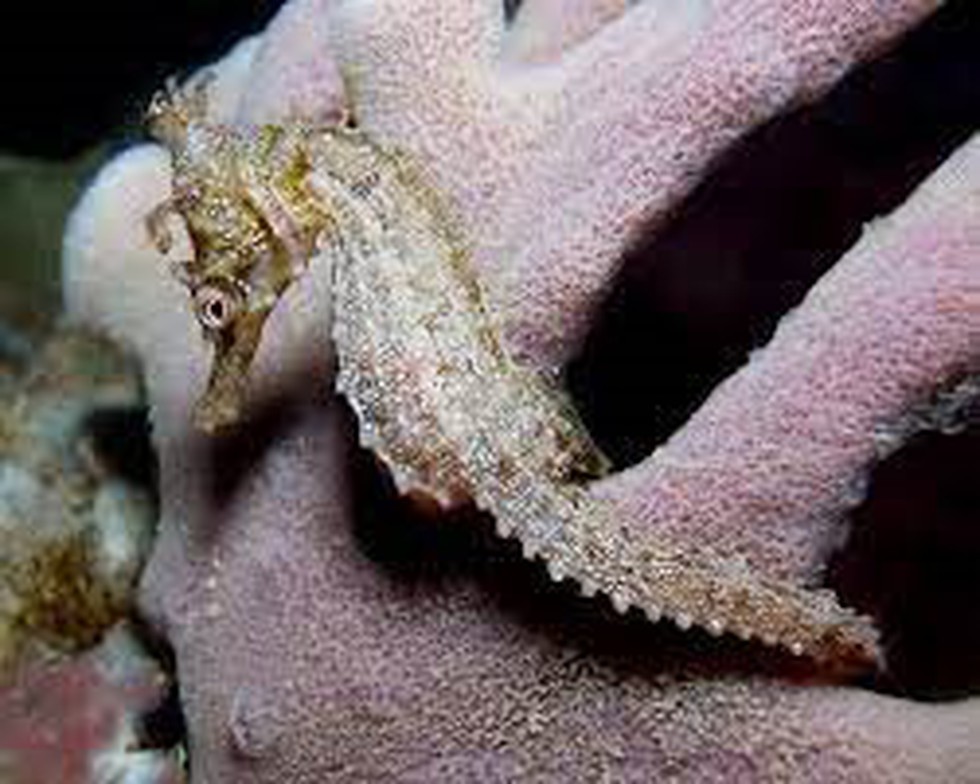
About White’s Seahorse:
- It is commonly seen holding onto the nets of swimming enclosures.
- The species was named after John White, Surgeon General to the First Fleet.
- Seahorses are often considered a flagship species for conservation.
- Male seahorses can be recognised by the presence of a pouch below the abdomen which is absent in females.
- It is usually very well camouflaged in various shades of brown, grey and black.
- Habitat:
- These are endemic to Australia.
- It occurs in depths down to about 25 m in temperate marine waters along the south-eastern and south-western coasts of Australia. It is common in Sydney Harbour.
- Breeding behaviours
- The reproduction of seahorses is truly remarkable.
- The male seahorse has a pouch (a marsupium) into which the female seahorse lays her eggs.
- In White's Seahorse, the male fertilises the eggs and cares for them for about three weeks.
- Threat: The primary cause for the decline in abundance of White’s Seahorse is the loss of natural habitats across their range in eastern Australia.
- Conservation Status:
- IUCN: Endangered
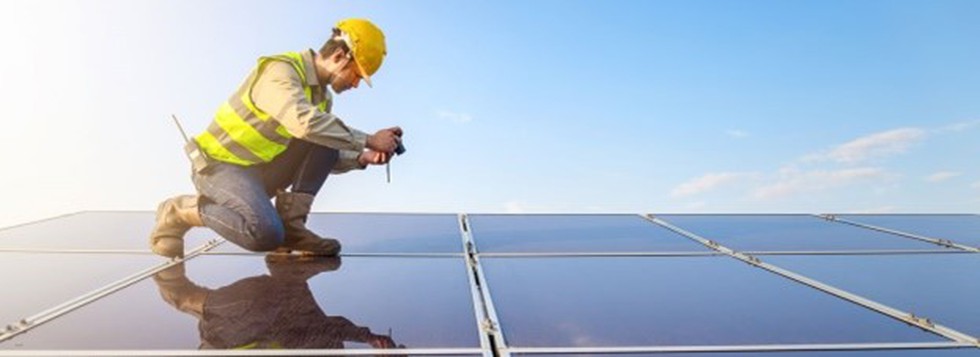
About STAR-C Initiative:
- The programme aims to boost solar power ecosystems in the poorest countries.
- The initiative is run by the International Solar Alliance in partnership with the United Nations Industrial Development Organisation (UNIDO).
- It aims to create a strong network of institutional capacities within ISA member states to enhance quality infrastructure for the uptake of solar energy products and services.
- The project is also funded by France.
- Programme’s objectives: Building solar workforces, standardizing products, setting up infrastructure, and raising awareness among policymakers in developing countries.
- Through this initiative, India aims to enhance the institutional capacities of International Solar Alliance member states and contribute to the development of quality infrastructure for solar energy uptake.
Key Facts about International Solar Alliance
- It was conceived as a joint effort by India and France to mobilize efforts against climate change through deployment of solar energy solutions.
- It was conceptualized on the side-lines of the 21st Conference of Parties (COP21) to the United Nations Framework Convention on Climate Change (UNFCCC) held in Paris in 2015.
- With the amendment of its Framework Agreement in 2020, all member states of the United Nations are now eligible to join the ISA.
- Headquarter: India



.png)

























































































































































.png)
.png)
.png)
.png)
.png)


.png)
.png)
.png)





.png)
.png)






.png)
.png)
.png)
.png)
.png)
.png)
.png)
.png)
.png)

.png)







.png)
.png)


.png)
.png)
.png)


.png)

.png)
.png)





.jpg)

.png)
.png)


.png)

.png)
.png)
.png)

.jpg)

.jpg)


.png)

.png)
.png)
.png)
.png)
.png)
.png)
.png)
.png)
.png)
.png)



.png)





.png)
.png)
.png)
.png)
.png)
.png)
.png)
.png)
.png)
.png)
.jpg)
.jpg)

.png)
.png)
.png)
.png)
.png)
.png)
.png)
.png)
.png)
.png)
.png)
.png)
.png)
.png)
.png)
.png)
.png)
.png)
.png)
.png)
.png)
.png)



.png)
.png)

.jpg)
.jpg)


.jpg)
.jpg)
.jpg)
.jpg)
.jpg)

.jpg)








.jpg)
.jpg)
.jpg)
.jpg)
.jpg)

















.jpg)
.jpg)







.jpg)


















.jpg)
.jpg)






























































































.jpg)
.jpg)


























.jpg)

.jpg)










.jpg)








.jpg)




.jpg)










.jpg)


















.jpg)












































.jpg)














.jpg)
.jpg)
.jpg)





.jpg)

.jpg)
.jpg)





































































.jpg)


































.jpg)
.jpg)
















































.jpg)












.jpg)


.jpg)




.jpg)
.jpg)
.jpg)

.jpg)
.jpg)
.jpg)
.jpg)

.jpg)
.jpg)
.jpg)

.jpg)
.jpg)
.jpg)
.jpg)
.jpg)
.jpg)
.jpg)
.jpg)

.jpg)


.jpg)
.jpg)
.jpg)
.jpg)
.jpg)
.jpg)
.jpg)
.jpg)
.jpg)
.jpg)











.jpg)
.jpg)





.jpg)
.jpg)
.jpg)
























.jpg)
























.jpg)









.jpg)
.jpg)







.jpg)
.jpg)









































.jpg)
.jpg)
.jpg)
.jpg)
.jpg)

.jpg)
.jpg)
.jpg)
.jpg)
.jpg)


.jpg)
.jpg)
.jpg)
.jpg)
.jpg)

.jpg)
.jpg)
.jpg)
.jpg)
.jpg)
.jpg)
.jpg)
.jpg)
.jpg)
.jpg)
.png)

.png)
.png)

.png)
.png)
.png)
.png)


.jpg)
.jpg)

.jpg)
.jpg)
.jpg)

.png)
.png)
.png)
.png)
.png)
.png)
.png)

.png)
.png)
.png)
.png)
.png)
.png)
.png)
.png)
.png)
.png)





































































-min.png)



.png)




.png)








































